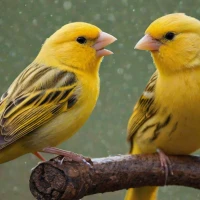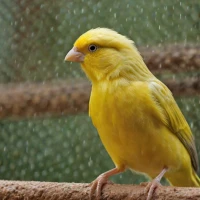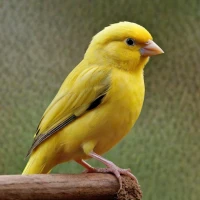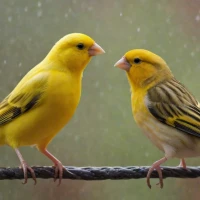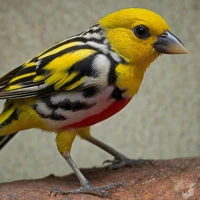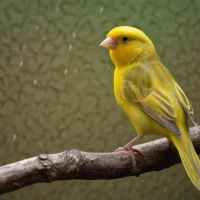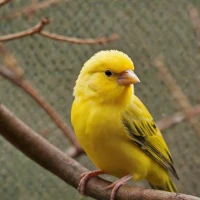A Canary Tale: The Differences Between Singing and Non-Singing Canary Breeds
Ah, canaries. Those charming, little songbirds with their cheery demeanor and striking colors. I remember the first time I brought home a canary—it was a bright yellow-hued singer who filled my mornings with melody. But you know, not all canaries are meant to sing. Some are raised simply for their beauty and coloration, and the distinction between these singing and non-singing breeds is rather fascinating.
The Origins of Singing Canaries
These feathered virtuosos trace their origins back to the Canary Islands (hence the name). The initial allure was their exceptional singing ability, which made them favorite pets among European nobility. Even Charles Darwin noted their varied songs and selective breeding in his works. (Fun fact: Canaries were often kept on ships as pets, and their chirping was believed to bring good luck!)
Breeds that Sing: The Artisan Performers
When it comes to canaries bred for their singing ability, a few breeds stand out:
The Roller Canary
The Roller Canary is the Beethoven of canary breeds. Originating from Germany, these canaries produce a consistent, rolling song that is soft and mellifluous. Even Winston Churchill enjoyed their music! Their song is continuous and dipped in sweet, long trills—it genuinely feels like rolling waves.
The American Singer Canary
A hybrid of the Roller and the Border canaries, the American Singer Canary is a versatile singer with a rich, diverse repertoire. If you’ve ever experienced a morning where every song seems to match your mood perfectly, you’ll appreciate this breed. It has a lively song, varying in pitch and tempo.
Breeds That Don’t Sing: The Visual Delights
Interestingly, not all canaries are celebrated for their vocal skills. Some are bred purely for their appearance. I once had a Gloster Canary named Oscar—the little fella didn’t sing a note but had such charming visuals! Here’s a couple to know:
The Gloster Fancy Canary
Recognizable by their “bowl cut” crest of feathers, Gloster Canaries are mainly bred for show. Their adorable look can be quite a conversation starter at any bird show (Trust me, they make heads turn!). They’re more about looks than vocal prowess.
The Red Factor Canary
Imported from South America, the Red Factor Canary is prized for its vibrant red or orange plumage. These stunningly beautiful birds are often mute but are a visual treat. You’d be hard-pressed not to admire their brilliant coloration.
The Art of Breeding: It’s More Than Just Genes
Selective breeding plays a pivotal role in defining whether canaries are singers or lookers. The breeders put immense effort into curating specific traits over generations. Imagine spending decades working meticulously towards a single goal! Sometimes, challenges arise such as maintaining genetic diversity while achieving the desired traits. It’s a delicate balance.
Diet: An Integral Factor
Would you believe the color of a Red Factor Canary can be enhanced by diet? Yeah! Foods rich in carotenoids like carrots and red bell peppers can intensify their hues. Singing ability also correlates with nutrition; a balanced diet promotes not just health but vocal vitality.
Health & Well-being of Canaries
Regardless of whether they sing or not, the health of these little feathery pals is crucial. A clean cage, a balanced diet, and regular check-ups can make a world of difference. It’s fascinating how resilient these tiny creatures can be, yet they require consistent care. Ensuring they have sufficient mental stimulation—through toys or interaction—can make them healthier, happier pets.
My Personal Experience: A Symphony of Colors and Sounds
Let me take you back to the time when I had two distinct pairs of canaries. One night, I was winding down and noticed the absence of melody—turns out, the singing pair wasn’t in the mood. Instead, my visually stunning canaries, with their majestic colors, caught my eye more than usual. It struck me then how each type enriches our lives uniquely; melodious mornings versus visually striking afternoons. It’s like having a colorful, dynamic painting hanging next to a symphony in progress.
Final Thoughts on Choosing Your Canaries
In closing, while the debate continues about whether singing or non-singing canaries make better pets, it ultimately boils down to what captivates you more—the sweet serenade or the aesthetic beauty. Both bring immense joy and have their own sets of quirks and perks. It’s kinda like choosing between a favorite song and a cherished painting—they both touch your heart in unique ways.
Thank you for sticking with me on this feathered journey. Remember, every canary, like every person, has its own story. Embrace the diversity 🌟!
Catch you next time! 🐦🦜



